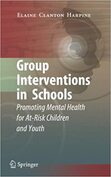 A hands-on project may be simple or fancy, but it must connect with the lesson being taught.
A hands-on project may be simple or fancy, but it must connect with the lesson being taught. ______________
What Are Schools Saying about Pandemic Learning Losses, and What Is Being Done to Help?
______________
Students anticipate success or failure based on their past experiences. Students who have failed in the classroom often consider themselves failures. Perceived inferiority reduces a child’s ability to learn. If we return from COVID with the same methods that the child failed with (phonics, whole-language, or balanced literacy) before COVID, the child will, most likely, continue to fail. We need a completely new way to teach reading.
At my reading clinic, a simple craft project becomes a hands-on way of teaching decoding and encoding skills, an initiator for intrinsic motivation, and the means to provide step-by-step directions which help to increase comprehension. The program uses creative art projects that are tied into the learning process and skills being taught. That helps children to set aside their fear and reluctance and try again. The craft projects are not mere craft projects for the sake of completing a craft. At the reading clinic, the hands-on project does not go home until the learning exercise is also completed. The hands-on craft projects become a teaching tool.
Yes, we have seen success with hands-on learning techniques:
- A student who failed for nine straight years in public school is now reading.
- A student diagnosed with ADHD and failing in reading moved up two grade levels in one year.
- A student diagnosed with dyslexia and whose parents tried everything, including expensive private one-on-one systematic phonics tutoring, learned to read, and moved up to beginning chapter books in one year.
- Six children who entered the program reading at the (pre-K) level ended the year reading at the 2nd grade reading level. Only one child in the group was a first grader.
- One student started at the pre-K level and ended the year reading at the third-grade level, while a second grader started the year reading below first grade and ended at the fourth-grade level. This improvement was just from September to May.
- One year, a student moved up four grade levels in reading, 4 students moved up three grade levels in reading, and 8 students moved up two grade levels in reading.
- Another year, two students moved up four grade levels in reading, 3 students moved up 3 grade levels in reading, and 6 students moved up two grade levels in reading.
So, yes, we can teach failing students to read. If we use the correct teaching methods, we can correct all reading failure—before and after COVID.
How Can We Overcome the Education Losses Children Have Experienced from the Pandemic? (Part 1)
What Are Schools Saying about Pandemic Learning Losses, and What Is Being Done to Help? (Part 2)
Are The Schools Creating A Positive Learning Environment That Will Help Students Correct Learning Losses? (Part 3)
A Hands-on Project Helps Create a Positive Learning Environment to Help Students Correct Learning Losses (Part 4 of a Series)













 RSS Feed
RSS Feed
